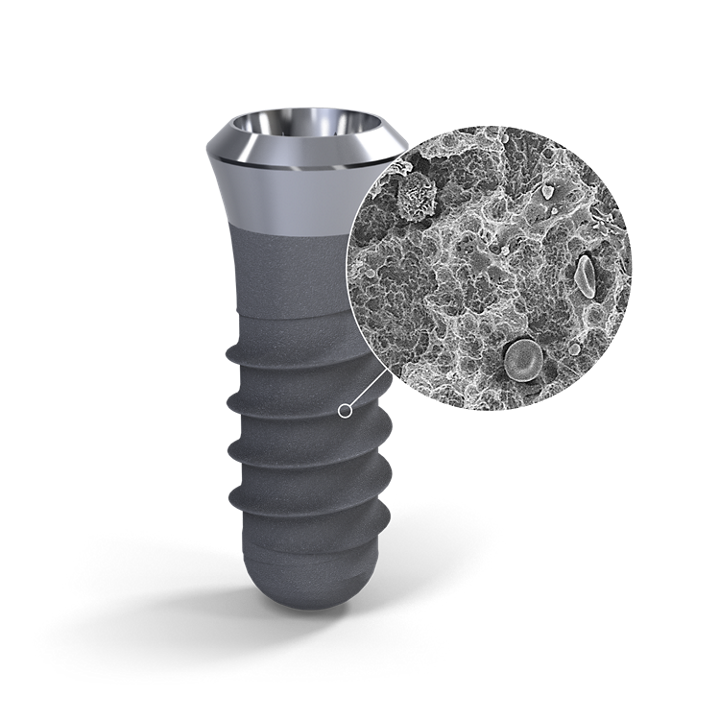
SEM images on fibrin network, image courtesy of Empa, 2016
Longevity and efficiency in daily practice.
The classic SLA® surface, introduced in 1998, is based on a large-grit sandblasting technique that generates a macro-roughness on the titanium surface. This is followed by acid-etching that superposes a micro-roughness. The resulting topography offers an ideal structure for cell attachment. Many peer-reviewed clinical and preclinical studies have confirmed its strong long-term performance and reliability, making it one of the best documented surfaces in dental implantology. According to an independent study, the odds ratio of developing peri-implantitis was more than three times higher in patients treated with competitor implant systems compared with Straumann® implants with SLA® surfaces.1
High and consistent survival rates between 95.1% and 98.8% documented by different studies after 5 and 10 year follow-up.2-7
Average bone loss of 0.5-1 mm after 10 years (baseline defined as implant loading time).3,4
Very low prevalence of peri-implantitis (1.8%) over the 10-year follow-up period.3
Brochures and videos
Looking for additional information? You'll find them in the Resource Center.